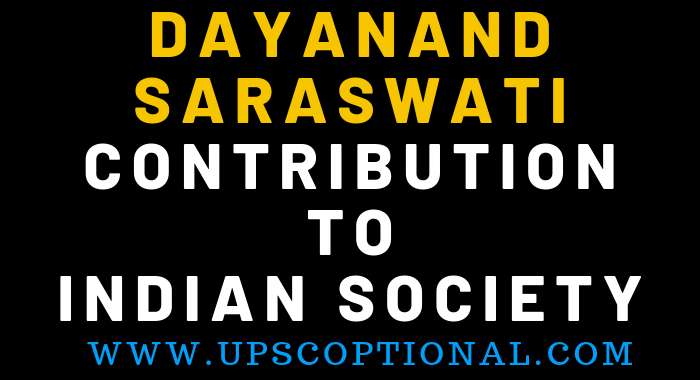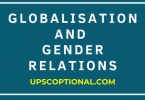Write a brief essay on Dayanand Saraswati’s contribution to Indian National revival.
Write a note on Dayanand Saraswati’s Socio-Political Ideas.
Ans – In the 17th century India saw a great intellectual and social movement, which is often styled by historians as the Bhakti Movement. It was movement of devotion and reform. It laid the foundation of Gurumukh literature in the Punjab. To this, we trace the beginning of Bengali literature, as this period is marked by writing of Kabir, Nanak, Chaitanya, Surdas and others. But though the movement resulted in a great development of vernacular literature, it can in no way be called a classical revival.
The 18th century was a unique period in this respect. It was essentially the period of revival of the study of Hindu literature. It also marked the introduction of Sanskrit into Europe and the foundation of Sanskrit Chairs in various European universities.
In India the Hindu classical revival commenced about the beginning of the 18th century and reached almost the climax under Swami Dayananda Saraswati, the founder of Arya Samaj. Though not exactly the heralder of Indian Classical Renaissance, he stood as its last and greatest representative who accomplished more than any of his predecessors for Hindu revival.
The revival ushered in by Dayananda was extensive and comprehensive. It was not merely a revival of ancient learning, language and literature, it was revival carried to the extreme. It was a revival of ancient religion and mode of worship, of ancient traditions and ideals of life. The movement for revival was radical one and it penetrated deep, entirely changing changing the Indian ideals. By this revival, Dayananda restored the unity between ancient and modern Indian civilization. Unity of ancient and modern history was also the greatest triumph of Italian classical Renaissance of the 15th century.
The 19th century was a period of mighty European influences in India. The time was ringing out the old and ringing in the new. The Indian leaders like Ram Mohan Roy and Keshav Chandra Sen, full of zeal and enthusiasm, anxious to see India as a powerful and glorious nation, attributed her existing position to her Oriental civilization.
They threw away almost everything oriental whether religious, social, literary or political. At this stage, Dayananda appeared as a ( divine ) champion of Aryan civilization. He proclaimed successfully that the new light was not to replace ancient civilization, but we were to work out a beautiful proportionate unity of the two civilizations as it would make our civilization richer than even the European. And for the cause of this unity, he accomplished for India what humanists did for Europe.
Another effect of this classical Renaissance was a sudden revolution in the system of education. Not only Sanskrit got a more important position in the studies at the universities, but in some quarters people departed from the prevalent university system altogether. They reverted to the ancient system of education in which the pupils remained with their teachers from their 7th upto 25th year. New type of educational institutions designed as Gurukulas were founded all over northern India. These institutions exhibited the magnitude of the great Hindu classical revival.
The third effect of this movement had been the great impetus that it had given to the vernacular literature. There was a time when some mad, denationalized individuals in our educated community used to talk of adopting English as their mother tongue. Even today we sometimes meet fanatics making a similar utterance. But the Indian classical revival, to our great relief, had dispersed these ignoble illusions. The vernacular literatures of India are progressing by leaps and bounds. Bengal has got a splendid literature. Other vernacular also are daily gaining strength. The whole literature of Arya Samaj, which has before it this splendid mission of Hindu classical revival, is in vernacular.
The fourth great achievements of this revival was that it enabled us to encounter our religious and social evils. We have been complaining of social evils of Hindu society, of early marriage, of the positions of widows, of the position of depressed classes, and a lot of other social institutions. We have also been complaining of our religious beliefs, the stone worship and idol worship, the priest worship and the omen worship. In fact, we have been crying over the major portions of the existing system of Hindu religion. Neither the time nor the Western influences could cure them.
The final achievements of the classical Renaissance was that it had down the lines on which our civilization was to develop. There was a time when the older generation had set up to develop on purely Western lines. Swami Dayanand diverted us from the old path. He declared that we were to retain the substructure of Hindu civilization on which we were to build up the superstructure of our new civilization. He pointed out that our new civilization must be a national civilization, and that we must preserve our Aryan character.
According to him, we are trustees and inheritors of our past civilization which we have to preserve at all costs. If we throw it away or even if we diminish its brightness, we will then betray not only our ancestors, not only the coming generations of the Indian people, but the whole of humanity, we must supply our quota to the world civilization.






